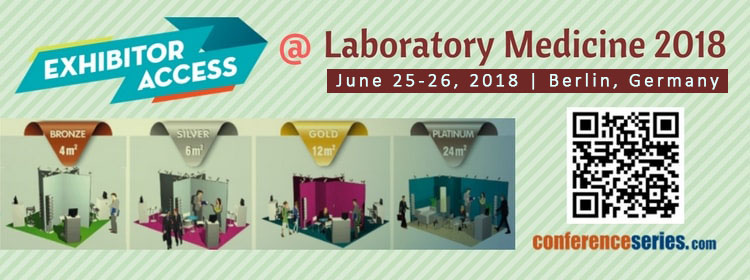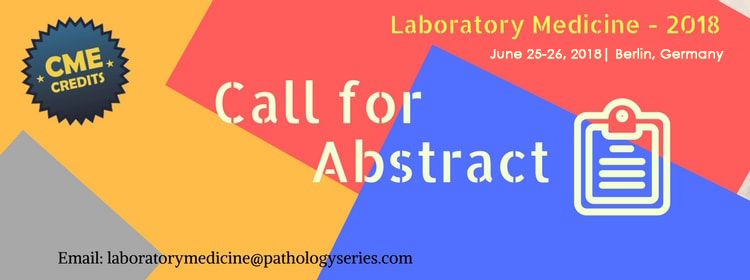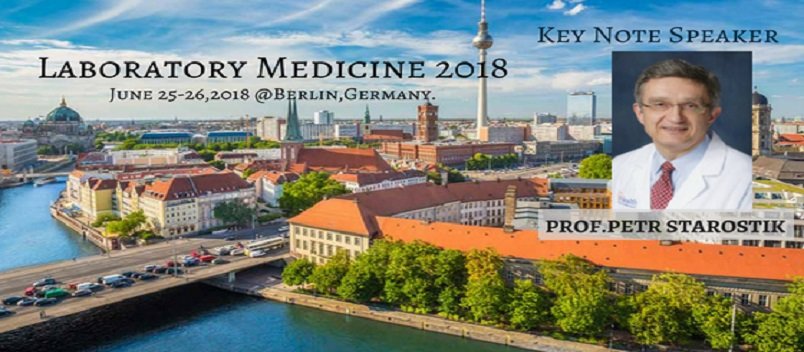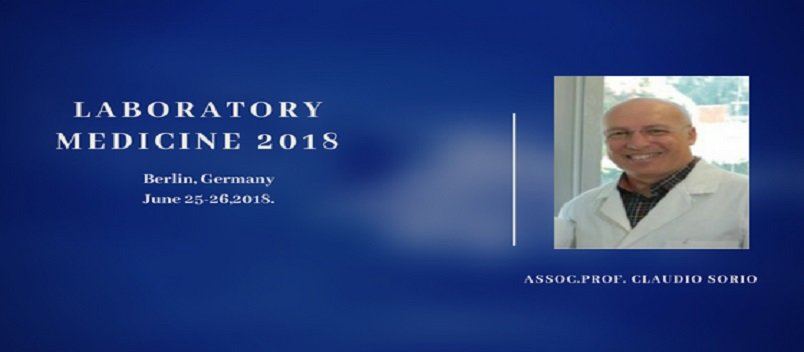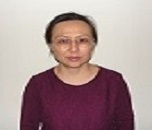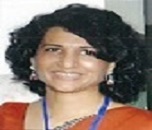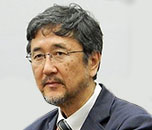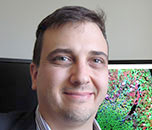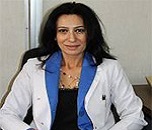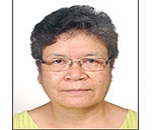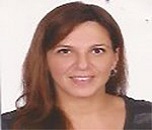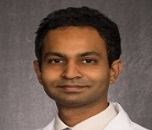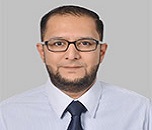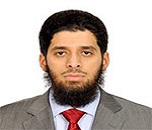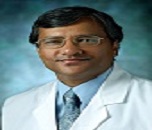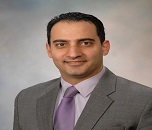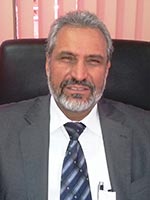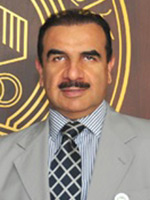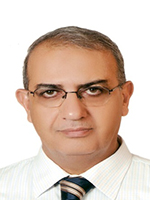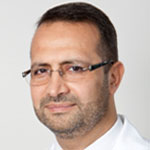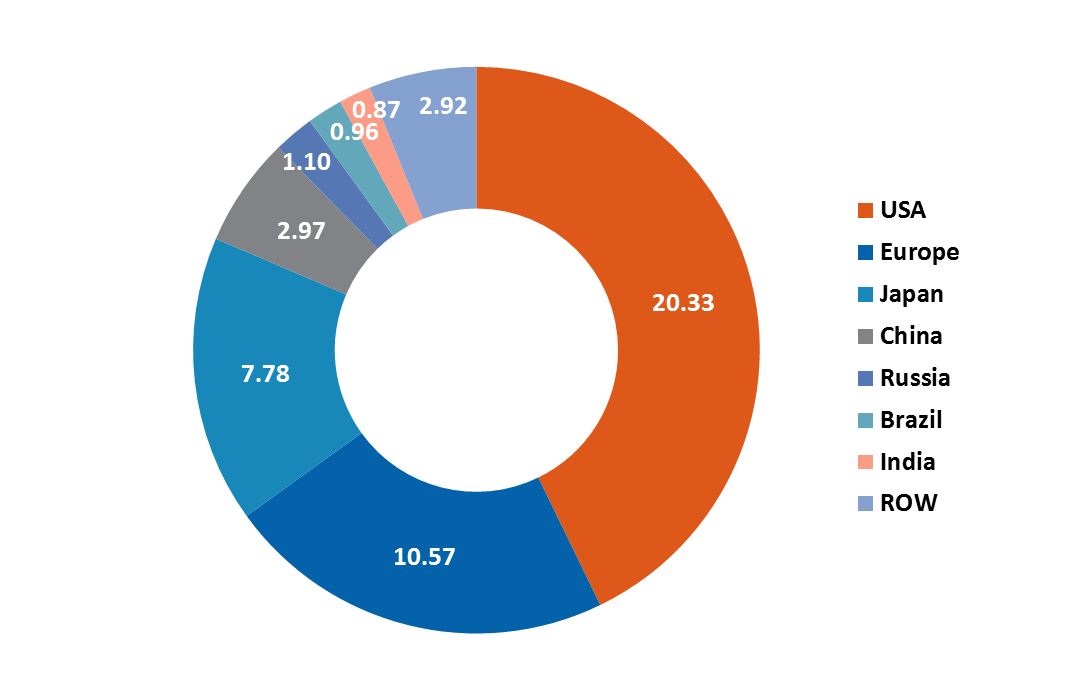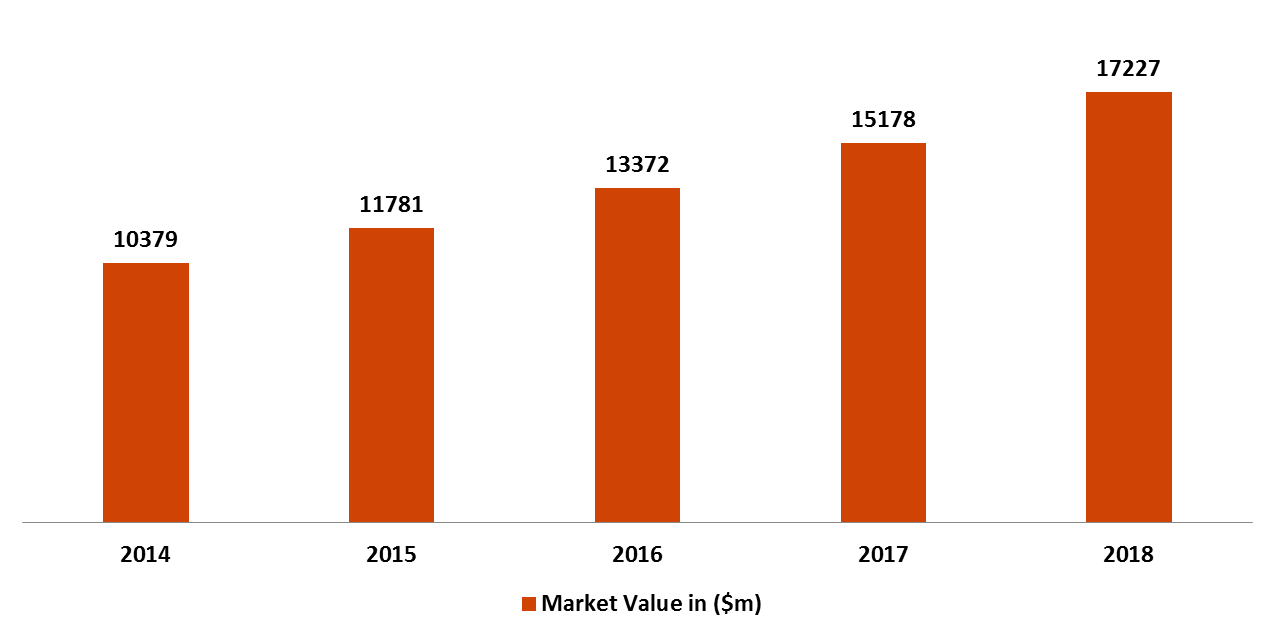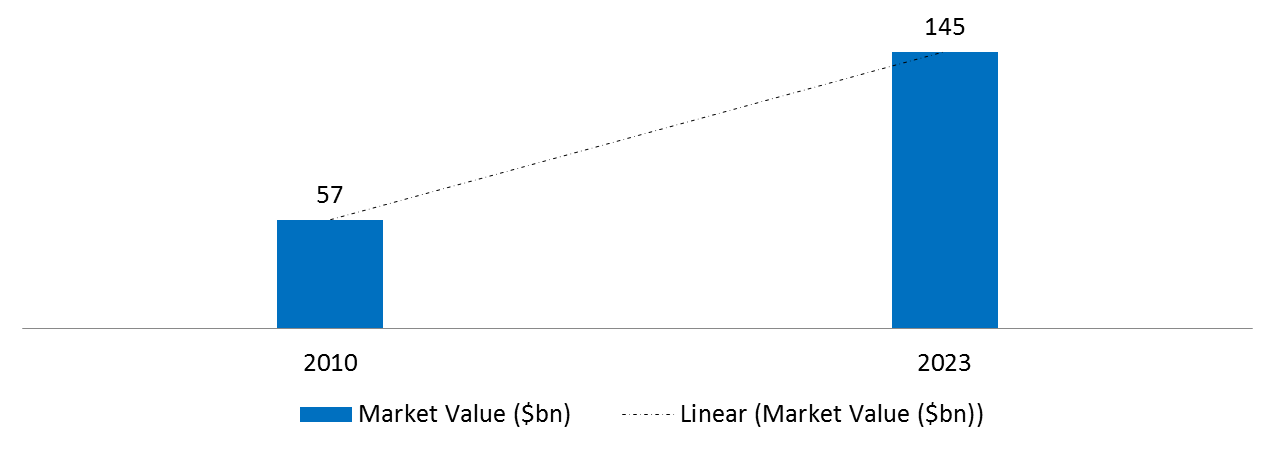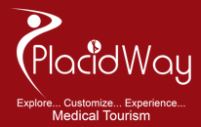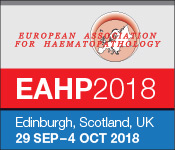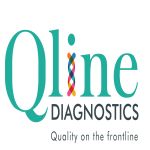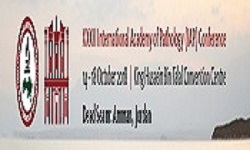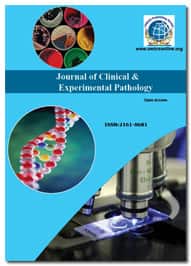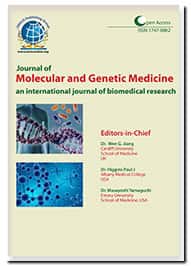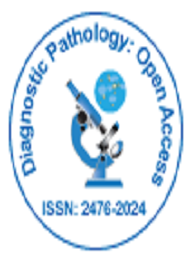Theme: Excavating laboratory medicine in the era of automation, digitization and informatics
Laboratory Medicine 2018
Conference series LLC LTD welcomes all the experts across the globe to its ‘13th International Conference on Laboratory Medicine & Pathology (Laboratory Medicine-2018), to be held during June 25-26, 2018 in Berlin, Germany. This conference comprises of brief keynote presentations, Oral talks, Poster presentations, and Exhibitions.
In the light of this topic, conference series offers a platform for the experts across the globe in the area of pathology, pharmacy, clinical science and Laboratory Medicine to share the cutting edge research discoveries and research.
What is laboratory medicine?
Laboratory medicine is that the branch of medications amid which examples of tissue, liquid or diverse matter inspected outside of the individual, for the most part inside the lab.
What is pathology?
The pathology is the study of disease in general, incorporating a wide range of biological science research departments and medical fields which includes plant pathology and veterinary pathology or more specifically it is to describe work within the contemporary medical arena of "general pathology," which includes the diagnose of any particular disease—generally through analysis of tissue, cell, and body fluid samples. The medico practicing pathology is called a pathologist. The major divisions of pathology are anatomical pathology and clinical pathology.
Why to 'ATTEND' Laboratory Medicine and Pathology?
A- Acquire the broad set of perspectives and insights on some of the critical issues in the field of Lab medics and Pathology.
T- Transmit current issues and advances of your latest research.
T- Thought provoking speeches by Doctors, Professors, Ph.D.'s and Young Researchers.
E- Exhibit your Laboratory medics/devices, Surgical, Diagnostic Devices, and Services.
N- Network development with Academic and Business Professionals.
D- Developing highly effective techniques for diagnosis by sharing knowledge.
Who Should Attend?
Practicing laboratory meds & pathologist, laboratory meds & pathologist in training and other healthcare professionals interested in the latest advances and techniques in the field. Another segment of the target audience is Pharmaceutical researchers, Clinical organizations, Educational institutes. Lab management, Anatomical Pathologists, Surgical Pathologists, Forensic Pathologists etc.
The 13th International Conference on Laboratory Medicine & Pathology Practice will exhibit the products and services from commercial and non-commercial organizations like Pathology Lab Equipment manufacturers, Cell Diagnostics Laboratories, Clinical Trial Sites, Business delegates, lab equipment and Equipment Manufacturers.
Why attend Laboratory Medicine 2018?
- Best platform to develop new partnership & collaborations.
- Best location to speed up your route into every territory in the World.
- 89% our conference attendees are the Key contact in their labs purchasing decisions.
- Our exhibitor booths were visited 4-5 times by 80% of the attendees during the conference.
- Past exhibitor’s feedback reveals ample of enquiries perceived from the conference attendees.
- Network development with both Academia and Business.
Track 1: Laboratory Management
A laboratory management system is a software-based laboratory and information management system with features that support a modern laboratory's operations. Laboratory management is responsible for guaranteeing that the job descriptions meet the human resource strategies, laboratory regulations, and accreditations criterions.
Related Conferences:
3rd World Chemistry Conference May 22-24, 2017 Chicago, USA; International Conference on Clinical Chemistry and Laboratory Medicine October 17-18, 2016 Chicago, Illinois, USA; 9th World Congress on Chemistry November 13-15, 2017 Lisbon, Portugal; 3th Annual World Congress Pathology April 24-26, 2017 Las Vegas NV, USA; 13th European Pathology Congress Aug 02-03, 2017 Milan, Italy
Related Societies:
International Academy of Pathology (UK); Los Angeles Society of Pathologists (USA); California Society of Pathologists (USA); The United States and Canadian Academy of Pathology (USA)
Track 2: Cytogenetics
Cytogenetics is a subdivision of genetics that is related with the study of the arrangement and function of the cell, specifically the chromosomes. It comprises of routine analysis of G-banded chromosomes, molecular cytogenetics such as comparative genomic hybridization which is the technique for evaluating copy number variations (CNVs) relative to ploidy level in the DNA of a test sample associated to a reference sample, without the requirement of culturing cells; and fluorescent in situ hybridization, and additional cytogenetic banding techniques.
Related Conferences:
2nd World Congress on Human Genetics & Genetic Disorders July 10-12, 2017 Chicago, USA; World Congress on Human Genetics November 07- 08, 2016 Barcelona, Spain; World Congress on Human Genetics November 07- 08, 2016 Valencia, Spain; International Conference on Clinical and Medical Genetics December 01-02, 2016 Atlanta, USA; International Conference on Clinical and Molecular Genetics July 10-12, 2017 Beijing, China
Related Societies:
European Cytogeneticists Association (London); The European Society of Human Genetics (Austria); Indian Academy of Medical Genetics (India); College of American Pathologists (USA)
Track 3: Clinical Microbiology
Clinical microbiology is the study of pathogenic microorganisms such as bacteria, parasites, viruses and fungi. The clinical microbiology as a subdivision of science deals with the interrelation of macro- and microorganisms under normal and pathological conditions. Moreover, in the dynamics of a pathological process with an interpretation for the treatment till the clinical or complete recovery is presented. A clinical microbiologist defines the nature of contagious disease and test the capacity of various antibiotics to inhibit or prevent or kill the isolated microbes.
Related Conferences:
6th Clinical Microbiology Conference October 20-22, 2016 Rome, Italy; International Conference on Infectious Diseases & Diagnostic Microbiology October 3-5, 2016 Vancouver, Canada; 4th World Microbiologists Annual Conference June 22-23, 2017 Philadelphia, USA; Global Veterinary Microbiology and Veterinary Medicine Summit & Expo October 17-19, 2016 Chicago Illinois, USA; 7th Annual Congress on Clinical Microbiology August 28th-30th, 2017 Philadelphia, USA; International Conference on Microbial Ecology Sept 18-20, 2017 Toronto, Canada
Related Societies:
The United States and Canadian Academy of Pathology; The Association for Clinical Biochemistry and Laboratory Medicine (London); American Clinical Laboratory Association (Washington, DC); Japanese Society of Laboratory Medicine (JSLM) Tokyo; The Association of Clinical Pathologists (United Kingdom)
Track 4: Diagnostic Laboratory Medicine
Diagnostic Laboratory Medicine is the process of determining which disease or condition explains a person's symptoms and signs. It is most often mentioned to as analysis with the medical context being implicit. The information required for diagnosis is characteristically collected from a history and physical examination of the person seeking medical care. A diagnosis, in the sense of diagnostic technique, can be regarded as an attempt at classification of an individual's disorder into isolated and distinct categories that allow medical decisions about cure and prognosis to be made.
Related Conferences:
10th Global Clinical Pathology Congress September 25-27, 2017 Jacksonville, USA; 9th Global Pathologists Congress December 05-06, 2016 Madrid, Spain; 4th International Conference on Clinical Case Reports April 17-19, 2017 Dubai, UAE; 13th Annual World Congress Pathology April 24-26, 2017 Las Vegas NV, USA; 13th European Pathology Congress Aug 02-03, 2017 Milan, Italy
Related Societies:
International Academy of Pathology; American Society for Investigative Pathology (USA); Pathological Society of Great Britain and Ireland (United Kingdom); Los Angeles Society of Pathologists (USA); California Society of Pathologists(USA); The Association for Clinical Biochemistry and Laboratory Medicine (London)
Track 5: Microscopy
Medical Microscopy is the technical arena of using microscopes to view objects and ranges of objects that cannot be seen with the bare eye, objects that are not within the resolution range of the normal eye. There are three well-known divisions of microscopy- electron, optical and scanning probe microscopy.
Related Conferences:
5th International Conference on Microbial Physiology and Genomics September 29-30, 2016 London, UK; International Conference on Infectious Diseases & Diagnostic Microbiology October 3-5, 2016 Vancouver, Canada; 9th Global Pathologists Congress December 05-06, 2016 Madrid, Spain; 4th International Conference on Clinical Case Reports April 17-19, 2017 Dubai, UAE; 13th Annual World Congress Pathology April 24-26, 2017 Las Vegas NV, USA; International Conference and Summit on Industrial and Pharmaceutical Microbiology October 17-18, 2016 Kuala Lumpur, Malaysia
Related Societies:
British Society for Haematology (London); The European Society of Human Genetics (Austria); Indian Academy of Medical Genetics (India); European Cytogeneticists Association (Europe); Molecular Pathology Association of India (India)
Track 6: Transfusion Pathology & Medicine
Transfusion medicine also termed as transfusiology, is the division of medicine that is related to transfusion of blood and blood components. It comprises of the issues related to blood donation, immunohematology and further laboratory testing, therapeutic apheresis, transfusion practices, stem cell, collections, coagulation, and cellular therapy. Laboratory management and understanding of public and federal regulations associated with blood products is also a huge fragment of the arena.
Related Conferences:
10th Global Clinical Pathology Congress September 25-27, 2017 Jacksonville, USA; 9th Global Pathologists Congress December 05-06, 2016 Madrid, Spain; 4th International Conference on Clinical Case Reports April 17-19, 2017 Dubai, UAE; 13th Annual World Congress Pathology April 24-26, 2017 Las Vegas NV, USA; 13th European Pathology Congress Aug 02-03, 2017 Milan, Italy
Related Societies:
Los Angeles Society of Pathologists (USA); California Society of Pathologists (USA); The United States and Canadian Academy of Pathology (USA); The Association for Clinical Biochemistry and Laboratory Medicine (London); American Clinical Laboratory Association (ACLA) (Washington, DC); Japanese Society of Laboratory Medicine (Tokyo)
Track 7: Pediatric Laboratory Medicine
The practice of pediatric laboratory medicine comprises unique challenges related to expansion, nourishment, development, and diseases throughout different periods of infancy, childhood, and adolescence. Pediatrics laboratory medicine, is the division of medicine that deals with the medical treatment of infants, children, and adolescents, and the age limit usually varies from birth up to 18 years of age The pediatric laboratory medicine comprises of clinical laboratory scientists, clinical pathologists, and clinicians, including point-of-care testing, analytic factors, age specific reference intervals, pre analytic variables, esoteric laboratory examinations and clinical impact. Although stimulating, pediatric laboratory testing offers many opportunities for enhanced patient care, clinical- and laboratory-based investigation, and education.
Related Conferences:
10th Annual World Congress on Pediatrics March 23-25, 2017 Orlando, Florida, USA; 10th World Pediatric Congress April 27-28, 2017 Dubai, UAE; 7th European Pediatrics and Pediatric Surgery September 14-16, 2016 Amsterdam, Netherlands; 11th International Conference on Clinical Pediatrics June 29-July 1, 2017 London, UK; 12th Annual Pediatric Medicine Congress August 28-30, 2017 Philadelphia, Pennsylvania, USA; 7th European Pediatrics and Pediatric Surgery September 14-16, 2016 Amsterdam, Netherlands
Related Societies:
Chinese Society of Hematology (China); Japanese Society of Hematology (Tokyo); Molecular Pathology Association of India (India); European Society of Pathology (Europe); American Academy of Toxicology (USA)
Track 8: Clinical pathology
Clinical pathology also termed as Clinical analysis or Clinical or Medical Biology, is a medical domain that is associated with the analysis of disease centred on the laboratory analysis of bodily fluids, such as urine, blood and tissue homogenates or extracts using the tools of chemistry, hematology, microbiology and molecular pathology. This domain needs a medical residency. Clinical pathology offers biochemical analysis of blood and urine for the determination of electrolyte status, diabetic control, markers of tissue destruction, and a host of other constituents in serum and plasma that specify a patient's degree of health or disease.
Related Conferences:
10th Global Clinical Pathology Congress September 25-27, 2017 Jacksonville, USA; 9th Global Pathologists Congress December 05-06, 2016 Madrid, Spain; 4th International Conference on Clinical Case Reports April 17-19, 2017 Dubai, UAE; 13th Annual World Congress Pathology April 24-26, 2017 Las Vegas NV, USA
Related Societies:
African society for laboratory medicine (Africa); European Federation of Clinical Chemistry and Laboratory Medicine (Europe); The American Society for Clinical Laboratory Science (USA); International Federation of Clinical Chemistry and Laboratory Medicine (ITALY); College of American Pathologists (USA)
Track 9: Antibiotics in Laboratory Medicine
Antibiotics in Laboratory Medicine have been the defining orientation source on estimating the effectiveness of antibiotic compounds in treating infectious ailments for over 35 years. Antibiotics, also known as antibacterial, are a kind of antimicrobial drug used in the cure and inhibition of bacterial toxicities. They may either kill or hinder the advancement of bacteria. Antibiotics are used to treat or prevent bacterial contaminations, and sometimes protozoan contaminations. Like Metronidazole is effective against a numerous parasitic diseases.
Related Conferences:
2nd World Congress and Exhibition on Antibiotics and Antibiotic Resistance October 13-15, 2016 Manchester, UK; World Congress and Exhibition on Antibiotics September 14-16, 2015 Las Vegas, Nevada, USA; 9th Global Pathologists Congress December 05-06, 2016 Madrid, Spain; 4th International Conference on Clinical Case Reports April 17-19, 2017 Dubai, UAE; 13th Annual World Congress Pathology April 24-26, 2017 Las Vegas NV, USA
Related Societies:
European Cytogeneticists Association (Europe); Molecular Pathology Association of India (India); European Society of Pathology (Europe); Society for Pediatric Pathology; California Society of Pathologists (USA)
Track 10: Clinical Applications of Molecular Biology
Molecular biology is the branch associated to the molecular origin of biological interactions between biomolecules in the several systems of a cell, including the connections between DNA, RNA and proteins and their biosynthesis, and the regulation of these connections. Molecular biology is the study of molecular underpinnings of the progression of transcription, replication and translation of the genetic material. Molecular Biology is the arena of biology that studies the composition, arrangement and interactions of cellular molecules such as nucleic acids and proteins that carry out the biological processes crucial for the cells functions and maintenance. The specific procedures used in molecular biology are instinctive to the arena but may also be pooled with methods and conceptions regarding genetics and biochemistry, so there is no huge difference made between these disciplines.
Related Conferences:
8th World Congress on Molecular Pathology June 26-28, 2017 San Diego, USA; 7th World Congress on Molecular Pathology July 25-26, 2016 Melbourne, Australia; 3th Annual World Congress Pathology April 24-26, 2017 Las Vegas NV, USA; 13th European Pathology Congress Aug 02-03, 2017 Milan, Italy; 9th Global Pathologists Congress December 05-06, 2016 Madrid, Spain
Related Societies:
The United States and Canadian Academy of Pathology (USA); The Association for Clinical Biochemistry and Laboratory Medicine (London); American Clinical Laboratory Association (ACLA) (Washington, DC); Japanese Society of Laboratory Medicine (Tokyo); College of American Pathologists (USA); Chinese Society of Hematology (China)
Track 11: Laboratory Toxicology
Laboratory toxicology is a subdivision of biology, chemistry, and medicine to be more precise, it is a division of pharmacology which is concerned with the study of the adverse effects of chemicals on living organisms. It also studies the destructive properties of chemical, biological and physical agents in biological classifications that establish the scope of destruction in living organisms. The relationship between dosage and its effects on the exposed organism is of high significance in toxicology. Factors that stimulus chemical toxicity comprises of the dosage no matter it is acute or chronic; the route of exposure, the species, age, sex and environment.
Related Conferences:
6th Clinical Microbiology Conference October 20-22, 2016 Rome, Italy; International Conference on Infectious Diseases & Diagnostic Microbiology October 3-5, 2016 Vancouver, Canada; 4th World Microbiologists Annual Conference June 22-23, 2017 Philadelphia, USA; Global Veterinary Microbiology and Veterinary Medicine Summit & Expo October 17-19, 2016 Chicago Illinois, USA; 7th Annual Congress on Clinical Microbiology August 28th-30th, 2017 Philadelphia, USA; International Conference on Microbial Ecology Sept 18-20, 2017 Toronto, Canada
Related Societies:
European Society of Pathology (Europe); American Academy of Toxicology (USA); American Society for Investigative Pathology (USA); Pathological Society of Great Britain and Ireland (United Kingdom); The Paediatric Pathology Society (Europe)
Track 12: Molecular pathology
Molecular pathology is an evolving branch within pathology which is concentrated in the study and analysis of disease through the investigation of molecules within organs, tissues or bodily fluids. Molecular pathology shares some characteristics of practice with both anatomic pathology as well as clinical pathology, molecular biology, biochemistry, proteomics and genetics, and is sometimes considered as a "crossover" branch. It is multi-disciplinary in nature and focuses chiefly on the sub-microscopic characteristics of disease. A key consideration is that more precise diagnosis is possible when the diagnosis is based on both the morphologic variations in tissues (traditional anatomic pathology) and on molecular testing.
Related Conferences:
8th World Congress on Molecular Pathology June 26-28, 2017 San Diego, USA; 7th World Congress on Molecular Pathology July 25-26, 2016 Melbourne, Australia; 3th Annual World Congress Pathology April 24-26, 2017 Las Vegas NV, USA; 13th European Pathology Congress Aug 02-03, 2017 Milan, Italy; 9th Global Pathologists Congress December 05-06, 2016 Madrid, Spain;
Related Societies:
The Association of Clinical Pathologists (United Kingdom); Association for Molecular Pathology (Bethesda); American Association Clinical Laboratory (Washington, DC); College of American Pathologists (USA); Chinese Society of Hematology (Beijing)
Track 13: Hematology
Clinical Hematology or haematology is the division of medicine related to the study, diagnosis, treatment, and prevention of diseases associated with blood. Hematology comprises the study of etiology. It involves curing diseases that disturb the production of blood and its components, such as blood cells, spleen, blood proteins, haemoglobin, platelets, bone marrow, blood vessels, and the mechanism of coagulation. Such diseases might consist of blood clots, haemophilia, blood cancers such as leukaemia, myeloma, and lymphoma; and other bleeding disorders. The laboratory work related to the study of blood is often accomplished by a medical scientist or medical laboratory technologist. Many of the hematologists work as hematologist-oncologists, also providing medical cure for all sorts of cancer.
Related Conferences:
9th International Conference on Hematology Nov 02-03, 2017, Las Vegas, USA; 7th World Haematologists Congress May 08-09, 2017 Barcelona, Spain; 69th Annual Scientific Meeting & Clinical lab expo March 22-24, 2018,Sandieago;9th International conference on Haematology Atlanta, USA; 11th International Conference on Leukemia and Hematologic Oncology Dec 04-05, 2017 Madrid, Spain; 10th Global Clinical Pathology Congress September 25-27, 2017 Jacksonville, USA; 9th Global Pathologists Congress December 05-06, 2016 Madrid, Spain;
Related Societies:
American Society of Hematology (USA); Chinese Society of Hematology (Beijing); Japanese Society of Hematology (Tokyo); British Society for Haematology (London)
Track 14: Automation in Laboratory Analysis
Laboratory automation is a multi-disciplinary strategy to research, develop, optimize and capitalize on technologies in the laboratory that enable new and improved processes. Laboratory automation professionals are academic, commercial and government researchers, scientists and engineers who conduct research and develop new technologies to increase productivity, elevate experimental data quality, reduce lab process cycle times, or enable experimentation that otherwise would be impossible. The most widely known application of laboratory automation technology is laboratory robotics. More generally, the field of laboratory automation comprises many different automated laboratory instruments, devices (the most common being autosamplers), software algorithms, and methodologies used to enable, expedite and increase the efficiency and effectiveness of scientific research in laboratories.
Related Conferences:
14th International Conference on Surgical Pathology & Cancer Diagnosis, May 17-18, 2018 Rome, Italy; 3th Annual World Congress Pathology April 24-26, 2017 Las Vegas NV, USA; 13th European Pathology Congress Aug 02-03, 2017 Milan, Italy;
9th International Conference on Predictive, Preventive and Personalized Medicine & Molecular Diagnostics, Oct 22-23, 2018 Boston, USA;
Related Societies:
The Association of Clinical Pathologists (United Kingdom); Association for Molecular Pathology (Bethesda); American Association Clinical Laboratory (Washington, DC); College of American Pathologists (USA); Chinese Society of Hematology (Beijing)
Track 15: Quantitative Techniques
Quantitative Techniques basic practical topic covers downstream processing techniques suitable for production-scale protein purification and illustrates how these techniques should be considered for process development. The focus of this session is on the understanding of the techniques and the parameters governing separation. Detailed presentations of the downstream processing techniques used (crossflow filtration & chromatography) are included as well as content covering optimization and purification strategies. Scale-up issues, column maintenance and process hygiene are briefly presented to describe the industrial environment and its principal objectives. Additionally, an overview of analytical techniques used for product identification is presented.
Related Conferences:
7th World Congress on Biopolymers and Polymer Chemistry, June 4-6, 2018 Osaka, Japan; 5th International Conference on Biopolymers and Bioplastics, October 19-21, 2017 San Francisco, USA; World Conference on Bioenergy, June 29-30, 2017 Madrid, Spain; 2nd Euro Global Conference on Biomass, September 28-29, 2017 Madrid, Spain ; 2nd International Conference on Chemical Engineering, October 2-4, 2017 Chicago, USA;
Related Societies:
The polymer society of Korea (Korea); Polymer processing society ; European Polymer Federation; Society of Polymer Science; Federation of European Biochemical Societies; British Plastics Federation (UK); European Council for Plasticizers and Intermediates; American Chemical Society(ACS),USA; American Physical Society; Polymer Division of the Royal Australian Chemical Institute.
Track 16: Blotting Techniques
Biochemistry studies molecules such as DNA, RNA, and proteins. Blotting techniques are what scientists use to separate these types of molecules. In cells, they exist as a mixture. Blotting allows researchers to find one protein among many, like a needle in a haystack. Blotting is generally done by letting a mixture of DNA, RNA or protein flow through a slab of gel. This gel allows small molecules to move faster than bigger ones. The separated molecules are then pressed against a membrane, which helps move the molecules from the gel onto the membrane. The molecules stick to the membrane, but stay in the same location, apart from each other, as if they were still in the gel.
Related Conferences:
3rd International Conference on Lipid Science & Technology, December 11-12, 2017 Rome, Italy; 3rd International Conference on Molecular Biology, Nucleic Acids & Molecular Medicine, August 27-28, 2018 Toronto, Canada; 3rd International Conference on Biochemistry & Molecular Biology, May 16-17, 2018 Singapore; 4th International Conference on Transcriptomics, May 17-18, 2018 Singapore;
Related Societies:
Human Proteome Organization, Japan Human Proteome Organisation (Jhupo), European Proteomics Association (Eupa), British Mass Spectrometry Society, Australian and New Zealand Mass Spectrometry Society.
Track 17: Animal Biotechnology
Animal Biotechnology is the use of genetic engineering techniques and molecular biology to genetically engineer the animals for agricultural, pharmaceutical and industrial applications. It is used to produce transgenic animals, therapeutic proteins, clones, diseases resistant offspring and organs by xenotransplantation.
This wonderful topic discusses all issues like genetic engineering, transgenic animals by Recombinant DNA techniques, gene knockout techniques which are used in producing organs for human organ replacement, cloning of animals by SCNT, ethical, environmental, regulatory and animal welfare issues.
Related Conferences:
Small Animal Cardiology 07 Oct 2017 - 08 Oct 2017 Warsaw, Poland; Veterinary Conferences Small Animal Nephrology and Urology 18 Nov 2017 - 19 Nov 2017 Warsaw, Poland; livestockcongress-2018,Oct 18-19, 2018 Paris, France. 9th International Conference on Animal Health & Veterinary Medicine, July 16-17, 2018 Atlanta, Georgia, USA
Related Societies:
West Virginia Veterinary Medical Association , Welcome to the Student Veterinary Emergency and Critical Care Society, Virginia Veterinary Medical Association, Veterinary Hospital Managers Association, Veterinary Council of New Zealand.
Track 18: Tissue Engneering
Tissue engineering is the use of a combination of cells, engineering and materials methods, and suitable biochemical and physicochemical factors to improve or replace biological tissues. Tissue engineering involves the use of a scaffold for the formation of new viable tissue for a medical purpose. While it was once categorized as a sub-field of biomaterials, having grown in scope and importance it can be considered as a field in its own.
What is Tissue Engineering?What tissue engineering is and how it works?
While most definitions of tissue engineering cover a broad range of applications, in practice the term is closely associated with applications that repair or replace portions of or whole tissues (i.e., bone, cartilage,[1] blood vessels, bladder, skin, muscle etc.). Often, the tissues involved require certain mechanical and structural properties for proper functioning. The term has also been applied to efforts to perform specific biochemical functions using cells within an artificially-created support system (e.g. an artificial pancreas, or a bio artificial liver). The term regenerative medicine is often used synonymously with tissue engineering, although those involved in regenerative medicine place more emphasis on the use of stem cells or progenitor cells to produce tissues.
Related Conferences:
Tissue Engineering and Regenerative Medicine, August 23-24, 2017 San Francisco, California, USA; Tissue Preservation and Biobanking, August 23-24, 2017, San francisco, Californis, USA; Tissue Science and Regenerative Medicine, October 02-04, 2017 Barcelona, Spain; Solicitation of Proposals for the TERMIS-AM 2020 Conference, July 31, 2017 .
Related Societies:
Australian Society of Plant Scientists, Australia; Botanical Society of China (BSC), China; Center for Plant Aging Research, Institute of Basic Science (CPAR), South Korea; Chilean Society of Plant Biologists (ChilSPB), Chile; Chinese Society for Plant Biology (ChSPB), China; Crop Science Society of China (CSSC), China.
Laboratory medicines are considered a vital part of the healthcare industry as almost 80.0% of doctor’s diagnoses are dependent on laboratory tests results. Laboratory diagnosis services, interpret and deliver specific information to doctors at the right time are perceiving an increase in demand. Laboratory medicine services offer a range of tests that help in identifying abnormalities and disease progression; these include routine urine and blood tests for genetic analysis like molecular expression testing, fluorescence in-situ hybridization. Major drivers for laboratory medicine market include increasing occurrence rates of chronic diseases, evolving the global base of geriatric population and increasing patient awareness levels affecting to disease diagnoses. Early disease detection assisted by specialized diagnosis, mostly in the areas of gynaecology, endocrinology, and oncology, is leading to doctors taking complete advantage of laboratory medicines for disease diagnosis and treatment. Global laboratory medicine market was valued at USD 174.14 billion in 2013. The market size of the Laboratory Medicine is highest in USA, which is need to be get propagated across the globe in order to develop the world in this arena.
Demographic representation (%)
Market Value ($m)
Pathology specimens on an average currently number approximately 73,000 per year and autopsies number approximately 120 per year. Approximately 600 specimens are processed for electron microscopy annually including over 350 renal biopsies per year. The Pathology Advanced Diagnostics Laboratory performs over approximately Urovysion tests, KRAS tests, B and T gene rearrangements HPV genotypes, DNA ploidy studies, and small-round-blue-cell PCR panels annually. The global digital pathology market is estimated to reach $5.7 billion by 2020. The In vitro diagnostics market revenue is expected to reach $74.65 billion by 2020 at a CAGR of 5.34% during 2014-2020. Diagnostic Medicine market growth rate is 5-7% yearly. The market value of the Laboratory Medicine is increasing gradually. And it is likely to increase to 17227million $ till 2018. This is a huge leap from 2014 -2018; the market value is subsequently increasing, as it is shown below in a graphical representation.
Future Market Growth ($bn)
As we can see the market value of Laboratory Medicine & Pathology is increasing so as the market value of the arena. In 2010 it was 57billion $, and due to the subsequent rise, it is expected to be 145 billion$ till 2023. We can see this graphical representation in the below-mentioned graph. As well as we can draw the conclusion that the arena is getting flourished in a fast pace.
Conference Highlights
- Molecular Pathology
- Hematology
- Laboratory Management
- Cytogenetics
- Clinical Microbiology
- Diagnostic Laboratory Medicine
- Microscopy
- Transfusion Pathology and Medicine
- Pediatric Laboratory Medicine
- Clinical Pathology
- Antibiotics in Laboratory Medicine
- Clinical Applications of Molecular Biology
- Laboratory Toxicology
- Automation in Laboratory Analysis
- Quantitative Techniques
- Blotting Techniques
- Tissue Engneering
- Animal Biotechnology
To share your views and research, please click here to register for the Conference.
To Collaborate Scientific Professionals around the World
| Conference Date | June 25-26, 2018 | ||
| Sponsors & Exhibitors |
|
||
| Speaker Opportunity Closed | Day 1 | Day 2 | |
| Poster Opportunity Closed | Click Here to View | ||
Useful Links
Special Issues
All accepted abstracts will be published in respective Our International Journals.
- Journal of Clinical & Experimental Pathology
- Diagnostic Pathology: Open Access
- Clinical & Medical Biochemistry
Abstracts will be provided with Digital Object Identifier by


